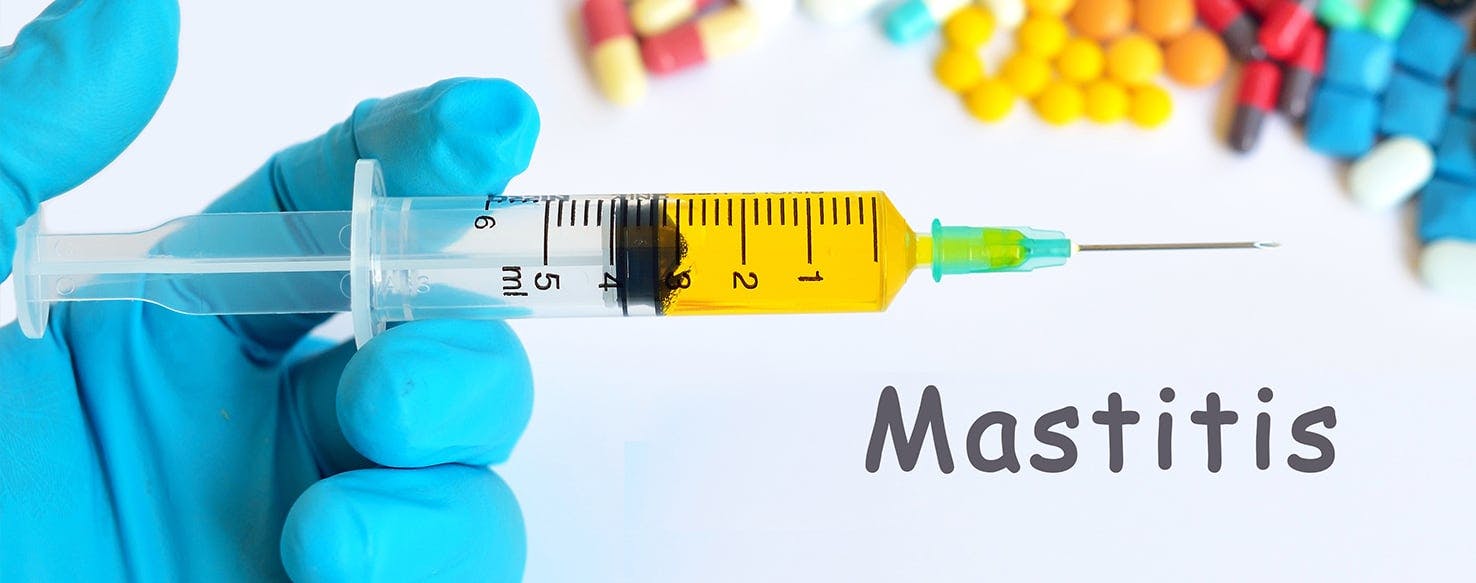Mastitis is a painful bacterial infection in the breast. If you’ve nursed children of your own or know a woman who had nursed her babies, you probably know someone who has suffered from the pain of mastitis. After spending time, energy, precious nutrients, and effort on growing babies, a mother’s immune system could be weakened. The breasts are the perfect place for new bacteria to be introduced. Bacteria from a baby’s mouth could transfer bacteria into a mother’s milk ducts, causing mastitis. If human women can develop and suffer from such a painful condition while nursing their babies, could your dog contract mastitis as well?
Can Dogs Get Mastitis?
YES!
Just as with all nursing mothers, mastitis can happen in any mammal and can indeed happen to your new mama dog. A nursing dog with a tummy full of milk might even have more than one milk duct affected by mastitis.
Does My Dog Have Mastitis?
If you have a new mama dog who has worked hard at making puppies, growing puppies, and delivering puppies, she could be at risk of developing mastitis. Dogs, like every other mammal, have the ability to provide mother’s milk to their babies. The mouths of these babes can carry bacteria that can enter the mother’s milk ducts, causing pain, swelling, and bacterial infection. Though mastitis could be found in more than one mammary gland, it is usually only found in one or two.
If not treated, mastitis could be dangerous for your dog, so be sure to watch your nursing mama dog closely as she cares for her babies. Not only will the milk ducts be clogged, keeping milk from coming out, but the swollen teat will become extremely painful for your dog. Mastitis also affects her puppies as well, leaving the pups looking for milk. Look for these signs if you suspect mastitis:
Although not as common, mastitis can affect female dogs who are not currently nursing and male dogs as well. For example, cancer of he mammary glands may cause the illness. You can read more about other mammary conditions in dogs
here. How Do I Treat My Dog’s Mastitis?
If you suspect mastitis in your dog, you will need to take your dog to the veterinarian right away for treatment. A severe case of mastitis may take a few days to develop, but it could be dangerous if the bacterial infection enters your dog’s bloodstream. A vet examination is imperative for the health of your dog and any puppies she may be nursing. Your veterinarian will most likely put your dog on antibiotics. This may affect the puppies’ feedings so you may need to bottle feed her puppies while she is being treated.
At home, you can apply a warm compress on the teats to ease the pain and provide comfort for your dog. Less severe cases of mastitis could have the puppies nursing, which can aid in unblocking the clogged milk ducts simply by nursing. If your dog’s mastitis is not terribly painful or severe, you might be able to express some milk on your own to offer your nursing mama dog some relief. Be sure to watch your dog as you express milk. She will let you know if it is comforting and relieving, or too painful to handle.
If your dog is not nursing or is a male dog, mastitis is possible, though more common in nursing mothers. If you are feeling swelling or lumps in a dog who is not nursing, you should talk with your veterinarian. Some of these cases could be mammary tumors.
How is Mastitis Similar in Dogs and Humans?
All mammals with mammary glands could contract mastitis. In most cases, bacteria from a baby’s mouth travels into the mammary gland, causing pain and plugged milk ducts. These bacteria could travel into the bloodstream, causing serious trouble for any mammal. Less severe cases are cleared up with antibiotics, while pain can be managed with warm compresses and expressing clogged milk. The pain and symptoms are similar.
-
Swelling
-
Clogged milk ducts
-
Redness of affected area
-
Red streaks across skin
-
Nursing is painful
How is Mastitis Different in Dogs and Humans?
Unlike humans, dogs have several mammary glands and several teats. They also tend to give live birth to several babies for each pregnancy. Dogs will have more babies requiring milk than humans do. If a milk duct or two are clogged, some puppies may not get milk because, unlike human mothers, the puppies fend for themselves instead of the mother placing the baby in place to feed as humans do.
Case Study
A young nursing mother dog had a healthy pregnancy and delivered eight healthy puppies. She has just enough teats to feed each of her puppies. However, with sharp little nails on those puppies and the new experience of nursing, her belly is sore. Her owner notices two of the puppies are not eating much. They appear to be nursing, but they constantly look for food, whine, and aren’t growing as much as their siblings. Upon examination, the owner notices red and swollen mammary glands on the mother dog. She winces each time the puppies nip at her while trying to drink her milk. Luckily for this mamma, her owner took her to see their veterinarian, and she was placed on antibiotics. With some help from the owner, who set the puppies on a rotating feeding schedule avoiding the affected teats for a few days while the infection cleared up, nursing was less painful for the mother. All the puppies were able to get food, and the mother was able to heal.


